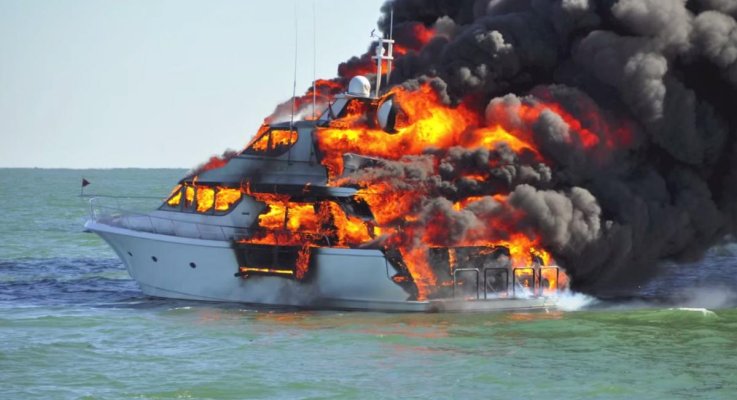stroutmail
Senior Member
- Joined
- Apr 20, 2020
- Messages
- 154
- Location
- United States
- Vessel Name
- Grand Day Out
- Vessel Make
- Grand Banks 36 Classic
Comments made by a surveyor set me off on a research project on fire suppression on boats.
For background, I am a degreed Mechanical Engineer with several patents and have managed very large fleets of trucks and buses. I am also a pilot and a race car driver that is very familiar with fire suppression.
Surveyor recommended an automatic engine fire suppression system..the kind that goes off if engine compartment temp exceeds 180 degrees and that shuts engine down. Or..a port in the salon floor thru which I would spray the suppressant, so I did not have to lift floor panel.
First...there is no USCG regs for either if these solutions.
Second, there is no way I would want an auto shutdown for my engine and really no way I would want a system to go off automatically.
Third, the new Halon replacement fluids are not just made to "fill up" the engine compartment..they are made to reduce oxygen, BUT more importantly to COOL the burning liquid. So they should be fired at the flame...not just into the engine compartment.
Fourth..I have a single engine in a cavernous engine room.. Not much combustible material near engine.
Fifth..I bought a diesel engine boat because they almost never catch fire. Theoretically possible, but very improbable. The real risk is an electrical fire..from big batteries or wiring.
Sixth..I would much rather have a good warning alarm so I can put out a small fire than waiting for an inferno fueled by a couple hundred gallons of diesel.
Finally, I have read all of the current USCG regs as well as their published "guidance" and I can find no requirement for a USCG approved engine room system for a motorboat less than 65 feet.
My goal is to add a fire alarm system, and upgrade my extinguishers to Halotron..number and size in excess of USCG regs. In addition,as a bonus, probably will add a manually fired Halotron system to spray above batteries.
Comments?
For background, I am a degreed Mechanical Engineer with several patents and have managed very large fleets of trucks and buses. I am also a pilot and a race car driver that is very familiar with fire suppression.
Surveyor recommended an automatic engine fire suppression system..the kind that goes off if engine compartment temp exceeds 180 degrees and that shuts engine down. Or..a port in the salon floor thru which I would spray the suppressant, so I did not have to lift floor panel.
First...there is no USCG regs for either if these solutions.
Second, there is no way I would want an auto shutdown for my engine and really no way I would want a system to go off automatically.
Third, the new Halon replacement fluids are not just made to "fill up" the engine compartment..they are made to reduce oxygen, BUT more importantly to COOL the burning liquid. So they should be fired at the flame...not just into the engine compartment.
Fourth..I have a single engine in a cavernous engine room.. Not much combustible material near engine.
Fifth..I bought a diesel engine boat because they almost never catch fire. Theoretically possible, but very improbable. The real risk is an electrical fire..from big batteries or wiring.
Sixth..I would much rather have a good warning alarm so I can put out a small fire than waiting for an inferno fueled by a couple hundred gallons of diesel.
Finally, I have read all of the current USCG regs as well as their published "guidance" and I can find no requirement for a USCG approved engine room system for a motorboat less than 65 feet.
My goal is to add a fire alarm system, and upgrade my extinguishers to Halotron..number and size in excess of USCG regs. In addition,as a bonus, probably will add a manually fired Halotron system to spray above batteries.
Comments?

